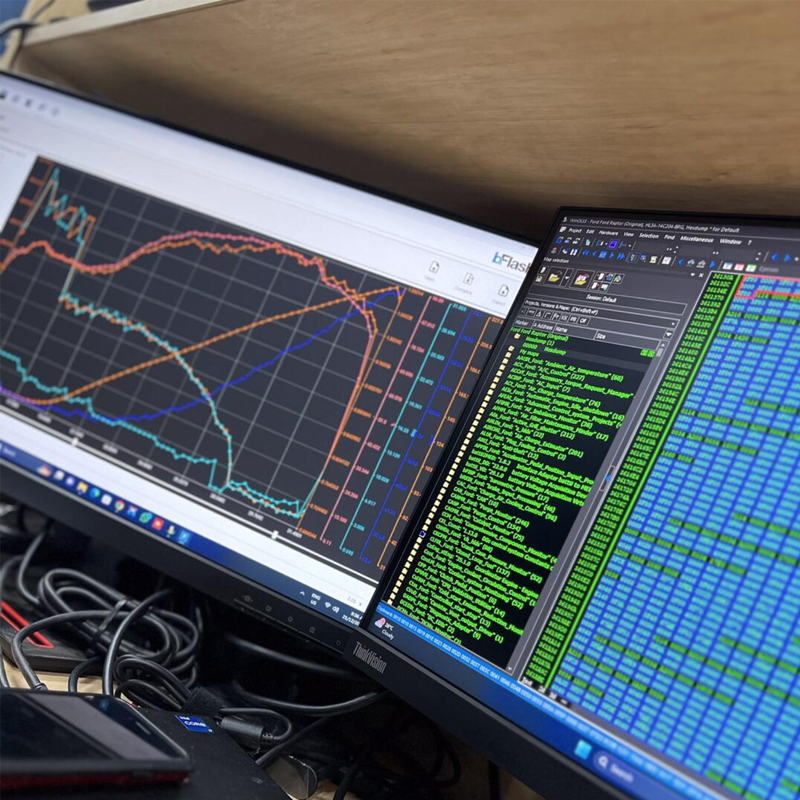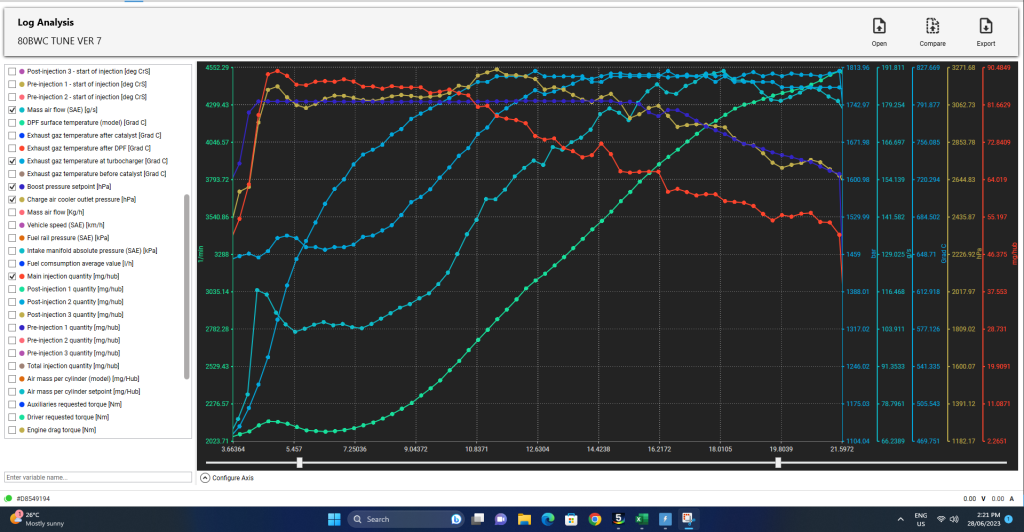The Secrets of ECU Tuning: Reverse Engineering
At DriveLogic Powertrain Calibration, we optimise vehicle performance through advanced tuning techniques. A key part of our work involves reverse engineering binary files and C/C++ code to enhance a vehicle’s electronic control unit (ECU).
This deep dive into the ECU unlocks the potential for improved performance, efficiency, and an enhanced driving experience.
Understanding ECUs and Their Importance
The ECU acts as the brain of a vehicle, managing crucial engine parameters like fuel injection, ignition timing, and boost control. While manufacturers set ECU parameters to balance performance, emissions, and fuel economy, these settings are often conservative to accommodate a variety of driving conditions and regulatory requirements. Our expertise in reverse engineering allows us to refine these settings for optimal performance.
The Process of Reverse Engineering
Binary File Extraction:
The first step in reverse engineering an ECU is extracting the binary file containing the firmware controlling the engine’s functions. Specialized tools and software are used to read and save this binary file for analysis.
Disassembly and Decompilation:
After extraction, the binary file is disassembled into assembly code, making the machine code human-readable. In some cases, decompilation converts the binary file into higher-level C or C++ code, offering a clearer understanding of the ECU’s logic and structure.
Code Analysis:
Our engineers meticulously analyze the disassembled or decompiled code to identify critical areas that control engine parameters. This step demands a deep understanding of automotive engineering and programming languages. We can modify the code to achieve desired performance enhancements by pinpointing these critical areas.
Calibration and Testing:
After identifying the target parameters, we make precise adjustments to the code. Modifications can include changes to fuel maps, ignition timing, boost pressure, and more. Each adjustment is carefully calibrated to ensure it delivers the intended performance improvements without compromising engine reliability.
Reflashing the ECU:
Once the new calibration is complete, reprogramming returns the modified binary file to the ECU. With the new settings, the updated firmware is now ready to control the engine.
Performance Testing:
The final step involves rigorous testing to validate the changes. We use dynamometers and road tests to measure performance gains and ensure the modifications work seamlessly under real-world conditions. Fine-tuning may be necessary to perfect the calibration.






Leave a Reply